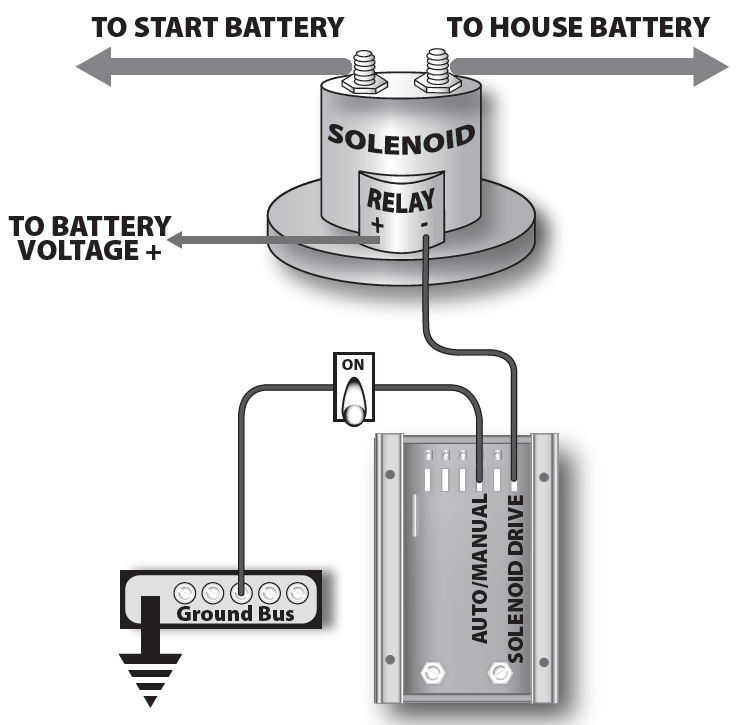dhays
Guru
- Joined
- May 26, 2015
- Messages
- 9,045
- Location
- United States
- Vessel Name
- Kinship
- Vessel Make
- North Pacific 43
This weekend my thruster/windlass battery bank died while raising my anchor. Fortunately, we were anchored in shallow water.
Since I've owned the boat the 2 Lifeline 8D batteries that power the windlass and thrusters has been charged using a Balmar Duo Charge. This is a DC/DC charger that will pass charge current from a house bank under charge, to an auxillary bank, typically a starter battery. This has worked really well on this boat for years on both the thruster/windlass bank as well as the genset start battery.
The Duo Charge has a couple limitations. The first is that it will only charge at a max of 30 amps. The second is that if the auxillary battery bank asks for more than 30 amps, it will shut down, wait for a bit, and then try again.
I found two things. The Lifelines had a voltage of 10.5v. Secondly, the 30 amp fuse between the Duo Charge and the thruster bank was blown. It had gotten so hot in the process that I'm not sure I trust the fuse holder anymore.
Secondly, the 30 amp fuse between the Duo Charge and the thruster bank was blown. It had gotten so hot in the process that I'm not sure I trust the fuse holder anymore.
So I have two questions. The first is why would the fuse blow? Did the Duo Charge fail to shut itself down if the thruster bank asked for more than its 30 amps?
I happen to have another functioning Duo Charge that I could use if I choose. The only problem is that with the Lifelines dead, a functioning Duo Charge will likely not charge them because they will be asking for more than 30 amps. I would need to find a way to charge the lifelines first.
My other alternative is to use an ACR to connect the house and thruster banks.
Any electrically wise folks have suggestions?
Since I've owned the boat the 2 Lifeline 8D batteries that power the windlass and thrusters has been charged using a Balmar Duo Charge. This is a DC/DC charger that will pass charge current from a house bank under charge, to an auxillary bank, typically a starter battery. This has worked really well on this boat for years on both the thruster/windlass bank as well as the genset start battery.
The Duo Charge has a couple limitations. The first is that it will only charge at a max of 30 amps. The second is that if the auxillary battery bank asks for more than 30 amps, it will shut down, wait for a bit, and then try again.
I found two things. The Lifelines had a voltage of 10.5v.
 Secondly, the 30 amp fuse between the Duo Charge and the thruster bank was blown. It had gotten so hot in the process that I'm not sure I trust the fuse holder anymore.
Secondly, the 30 amp fuse between the Duo Charge and the thruster bank was blown. It had gotten so hot in the process that I'm not sure I trust the fuse holder anymore.So I have two questions. The first is why would the fuse blow? Did the Duo Charge fail to shut itself down if the thruster bank asked for more than its 30 amps?
I happen to have another functioning Duo Charge that I could use if I choose. The only problem is that with the Lifelines dead, a functioning Duo Charge will likely not charge them because they will be asking for more than 30 amps. I would need to find a way to charge the lifelines first.
My other alternative is to use an ACR to connect the house and thruster banks.
Any electrically wise folks have suggestions?

